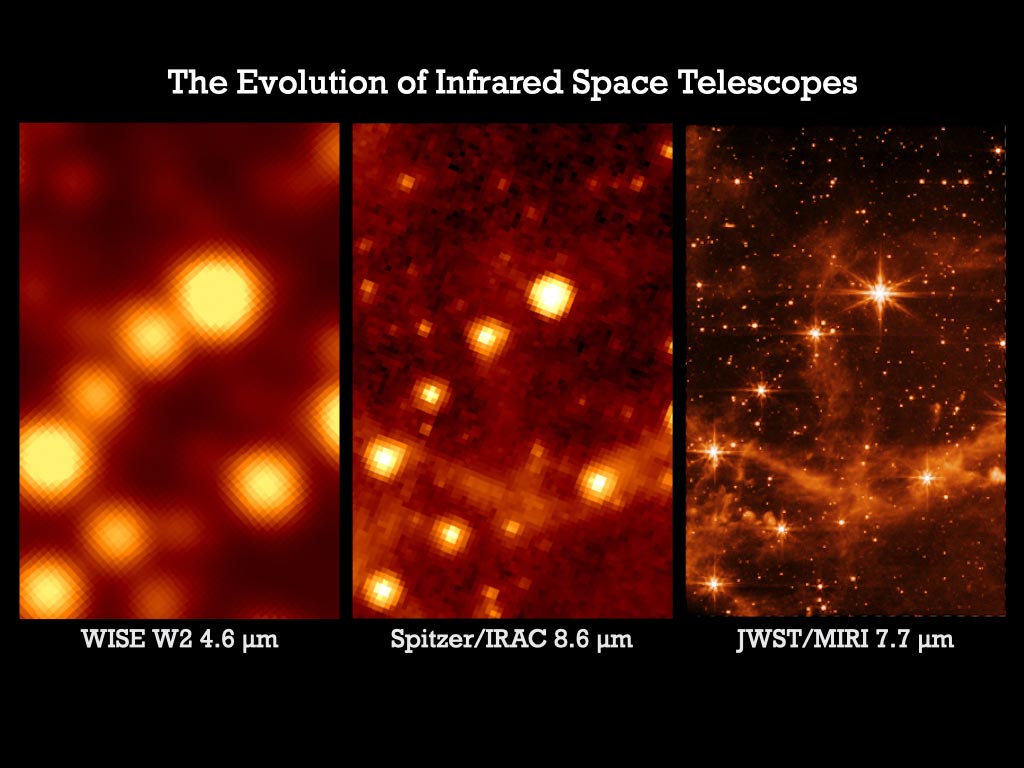
المجتمعات العلمية والفلكية تنتظر بفارغ الصبر الثلاثاء 12 يوليو، للمجيء. هذا هو اليوم الذي[{” attribute=””>NASA promises to release the first images taken by the James Webb Space Telescope (JWST)! According to a previous statement by NASA, these images will include the deepest views of the Universe ever taken, as well as spectra obtained from an exoplanet atmosphere. In another statement from a recent press conference, it was stated that the images were so beautiful they almost brought Thomas Zarbuchen – Associate Administrator for NASA’s Science Mission Directorate (SMD) – to tears!
The James Webb Space Telescope is the most powerful and complex observatory ever deployed, not to mention the most expensive, at $10 billion! Because of its complex system of mirrors and its advanced sun shield, the telescope had to be designed so that it could be folded up (origami style) to fit inside a payload fairing, then unfold once it reached space. To ensure everything would work, the telescope had to be rigorously tested, a process that caused numerous delays and cost overruns (a situation made worse by the COVID pandemic).

Engineering images of sharply focused stars in the field of view of each instrument demonstrate that the telescope is fully aligned and in focus. Credit: NASA/STScI
Since it launched on Christmas Day in 2021, the observatory has successfully unfolded, commissioned its science instruments, and reached the L2 Lagrange Point, where it will remain for its entire mission. It also successfully aligned all 18 of its segmented mirrors, which are arranged in a honeycomb configuration that measures 6.5 meters (more than 21 feet) in diameter – almost three times the size of Hubble’s primary mirror. Previously, NASA released test images the JWST took of a star 2,000 light-years from Earth in the direction of the constellation Ursa Major (HD 84406).
According to Zurbuchen, who saw the images during a Wednesday briefing with other NASA officials, the first-light images it has taken provide a “new worldview” into the cosmos. Addressing what it was like to see the first-light images at the Wednesday news conference, Zarbuchen said:
“The images are being taken right now. There is already some amazing science in the can, and some others are yet to be taken as we go forward. We are in the middle of getting the history-making data down. It’s really hard to not look at the Universe in a new light and not just have a moment that is deeply personal. It’s an emotional moment when you see nature suddenly releasing some of its secrets, and I would like you to imagine and look forward to that.”
During the news conference, NASA officials said that the images and other data would include the deepest-field image of the Universe ever taken. The previous record-holder was the image acquired as part of the Hubble Ultra Deep Field, which included 10,000 galaxies of various ages, colors, and distances in the direction of the constellation Fornax. The 100 oldest galaxies in the image (shown below) appear deep red and were dated to just 800 million years after the Big Bang, making them the most distant and oldest ever viewed.

This view of nearly 10,000 galaxies is called the Hubble Ultra Deep Field. Credit: NASA, ESA, and S. Beckwith (STScI) and the HUDF Team
The James Webb images peer even further into the cosmos and reveal what galaxies looked like just a few hundred million years after the Big Bang. These earliest galaxies were instrumental in dispelling the “Cosmic Dark Ages,” a period where the Universe was permeated by neutral hydrogen atoms and therefore invisible to modern instruments. Astronomers know what the Universe looked like just prior to this period, thanks to the relic radiation from the Big Bang, which is visible to our instruments – the Cosmic Microwave Background (CMB).
As a result, astronomers have been unable to see what the earliest galaxies looked like since their formation coincided with the Dark Ages. But thanks to its advanced infrared imaging capabilities, James Webb can pierce the veil of “darkness” and see what galaxies initially looked like. This will allow scientists to model and simulate the evolution of cosmic structures with far greater accuracy, which could also provide fresh insight into the role of Dark Matter and Dark Energy in cosmic evolution.
https://www.youtube.com/watch؟v=vQMKipQXZGs
ستوفر صورة أخرى للجمهور شيئًا آخر لم يروه من قبل (والذي يعد جيمس ويب مناسبًا بشكل مثالي لتقديمه). ستظهر هذه الصورة بامتداد[{” attribute=””>exoplanet, as well as spectral data from its atmosphere obtained by its advanced suite of spectrographs. These instruments allow astronomers to observe chemical signatures from an exoplanet by observing how light is absorbed (and at which wavelengths) in its atmosphere. These signatures will reveal the atmosphere’s composition, which could include oxygen gas, nitrogen, and carbon dioxide, the very things we associate with “habitability.”
Even more exciting, these same observations could reveal traces of methane gas, ammonia, and other chemicals indicative of biological processes that we associate with life (aka. “biosignatures”). Last, but not least, the presence of chemicals like chlorofluorocarbons and others we associate with industrial processes would be seen as indications of advanced life (aka. “technosignatures”). In short, images by James Webb will allow astronomers to model the evolution of the cosmos, place tighter constraints on which exoplanets are “habitable,” and could even reveal that humanity is not alone in the Universe.
https://www.youtube.com/watch؟v=SydqTlhmhxE
هناك أشياء كثيرة أخرى التي سيدرسها جيمس ويب خلال عملياتها العلمية الأولية (التي ستستمر حتى عام 2028) ومهمتها التي تبلغ عشر سنوات (والتي من المتوقع أن تمتد إلى 20 عامًا). سيشمل ذلك الغبار والغاز الذي يشكل الوسط النجمي (ISM) ، وأقراص الحطام حول النجوم الفتية ، وأنظمة الكواكب في عملية التكوين ، والأجسام الأكثر برودة مثل النجوم من النوع M (القزم الأحمر) والأقزام البنية ، ومركز ال[{” attribute=””>Milky Way Galaxy.
And it all starts with these “first-light” images, which NASA says it plans to release on July 12th, starting at 10:30 AM EDT (08:30 AM PDT). According to NASA’s deputy administrator, Pam Melroy, these first images were emotionally overwhelming for her too. “What I have seen moved me, as a scientist, as an engineer, and as a human being,” she said. While the rest of us will have to wait another eight days, the teasers we’ve been treated to suggest that the years of delays, retesting, and cost overruns will totally be worth it!
You can check out the images by going to NASA’s JWST mission page.
Originally published on Universe Today.

“متعطش للطعام. طالب. متحمس محترف للزومبي. مبشر شغوف بالإنترنت.”




More Stories
من المحتمل أن يكون قلب بلوتو قد نشأ نتيجة اصطدام قديم
ظاهرة تشبه قوس قزح قد تتوهج على الكوكب الخارجي الجهنمي WASP-76b
نتائج ملحوظة – بحث جديد يكشف أن الحبل الشوكي يمكنه التعلم والحفظ